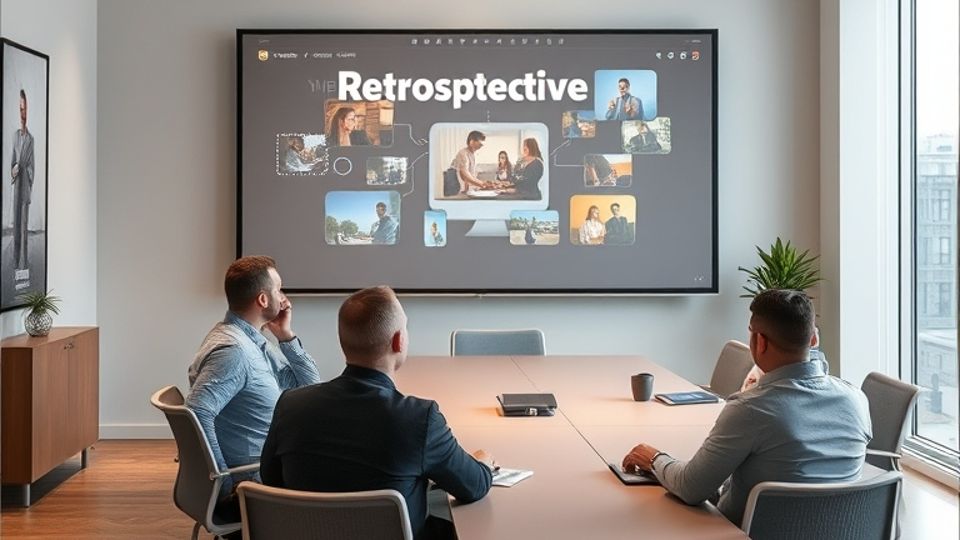Retrospective Template
One of the integral components of Agile project management is retrospectives as a means of work process improvement. These meetings help teams revisit their practices, acknowledge and celebrate the positive aspects, and identify areas for improvement. However, the effectiveness of retrospectives largely depends on their structure and the tools applied. A good retrospective template is just what you need in such a case. In this blog, we shall look into the benefits of using retro templates and underscore how the superior abilities of Vabro can leverage your retrospective session to drive meaningful improvements.
The Importance of Retrospectives
Retrospectives are one of the most important parts of Agile practices, allowing teams to reflect on their performance and find further improvements in their practices. This will, of course, be an opportunity to discuss structurally what went well, what did not, and how things can be improved. Holding retrospectives regularly helps teams adjust strategies, overcome difficulties, and foster a culture of continuous improvement.
Structured Reflection
A good retrospective template provides for a structured and productive reflection process. It guides the discussion to be focused on what is necessary and relevant. Fields for celebrating success, challenges, actionable improvements, and goal setting for the next iteration are common elements in a retrospective template. Using a template will let teams ensure that all important areas of the project are covered and the meeting is organized.
Consistency Means Progressive Improvement
For any Agile project to realize meaningful improvements, there needs to be consistency. Retrospective templates offer a standard through which reflection on each iteration should be based, making tracking progress easy and assessing the change impact straightforward. With a consistent format, teams can compare insights from a number of retrospectives, identify recurring issues, and implement solutions that drive ongoing improvements.
Improved Collaboration
Retrospective templates provide a framework for discussion, thereby ensuring better collaboration. All observations, suggestions, and action items can be noted down against these points by the team in the template. The documentation may turn out to be a useful reference for future retrospectives, thereby capturing insights and acting upon them. Improved collaboration will also result in more holistic feedback and greater commitment of ownership among the members of the team.
Focused Discussion
Even with a good template, without structure, retrospectives tend to wander and blur. A good template keeps the discussion focused on certain prompts or questions. For example, a template might contain prompts such as, "What was our largest success this sprint?" or "What obstacles did we face, and how do we address them?" Questions focusing on 'how' like this will keep the conversation on track, ensuring that all subjects under discussion are covered.
How Vabro Makes Your Retrospective Meetings Efficient
Vabro comes with a range of Agile tools that make retrospective meetings more effective. There are a few integrations and features unique to the Vabro platform. These are ways the Vabro tool will make your retrospective meetings:
- Customizable Retrospective Templates
Vabro gives you completely customizable retrospective templates to fit what you need for your team. Predefined sections and questions actually ease the pain of running structured and insightful retrospectives. Teams can even edit the templates to add categories of certain questions or target areas to ensure that each retro that will occur will be in line with the goals set and the challenges faced.
- Communication Tools Integration
Vabro is a retrospective tool that integrates with communication platforms, such as Slack, promoting real-time discussion and updates on the retrospective process. This gives team members the ability to document feedback and share observation notes on action items in the channels as it happens. Such integration means that the insights from a retrospective are captured and communicated.
- Advanced Analytics and Reporting
Teams can therefore dig into retrospective data to mine trends and patterns in improvements using Vabro's sophisticated analytics and reporting features. Personalized dashboards, detailed reports, and actionable insights provide granular and salient knowledge about team performance, thus allowing teams to continuously monitor how the changes that have been implemented are taking effect over time. - Actionable Insights and Follow-Up
Vabro makes sure that whatever could be actionable in the retrospective gets translated into action items. Groups will be able to assign tasks, set due dates for accomplishing those tasks, and track task progress directly in Vabro. So, quite smoothly, from discussion to action, improvements are well implemented with the consequent tracking of progress.
Conclusion
These templates are very important tools in fostering effective reflections that lead to continuous improvement in an Agile project. The gist of these templates is to make collaboration larger, discussions focused, and support growth continuous due to their structural and consistent format. In the Vabro app, this translates to the ability to create custom templates and to be expandable and integrable with analytics, which are equally powerful in respect to controlling retrospective sessions. Therefore, using features from Vabro facilitates the realization of maximum value for the team from Agile practices.
